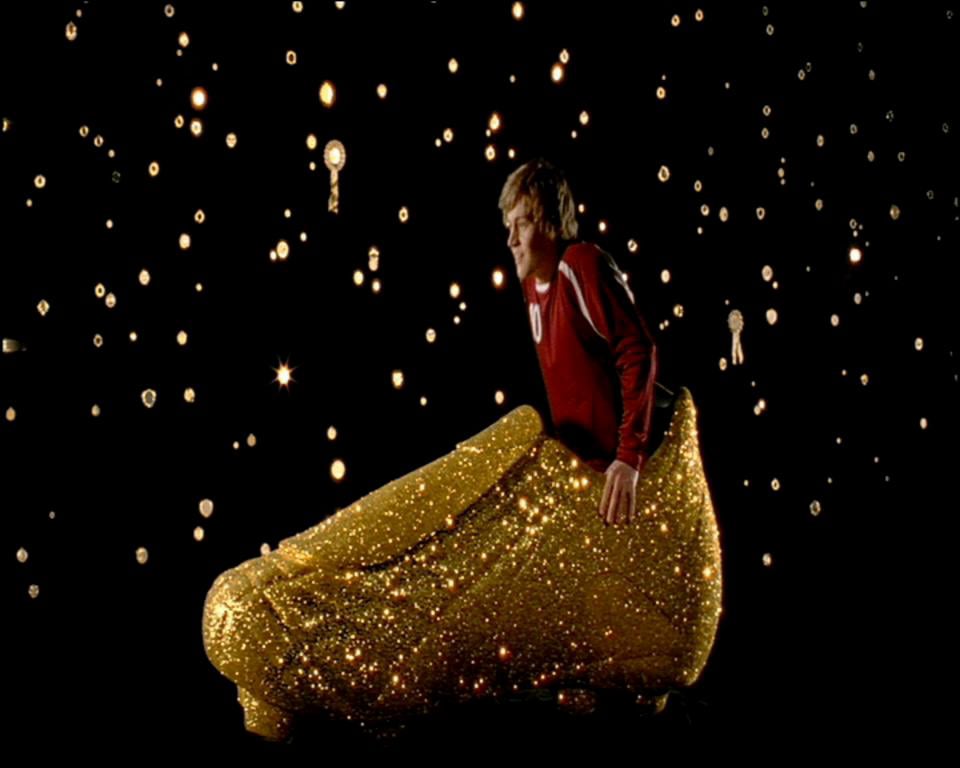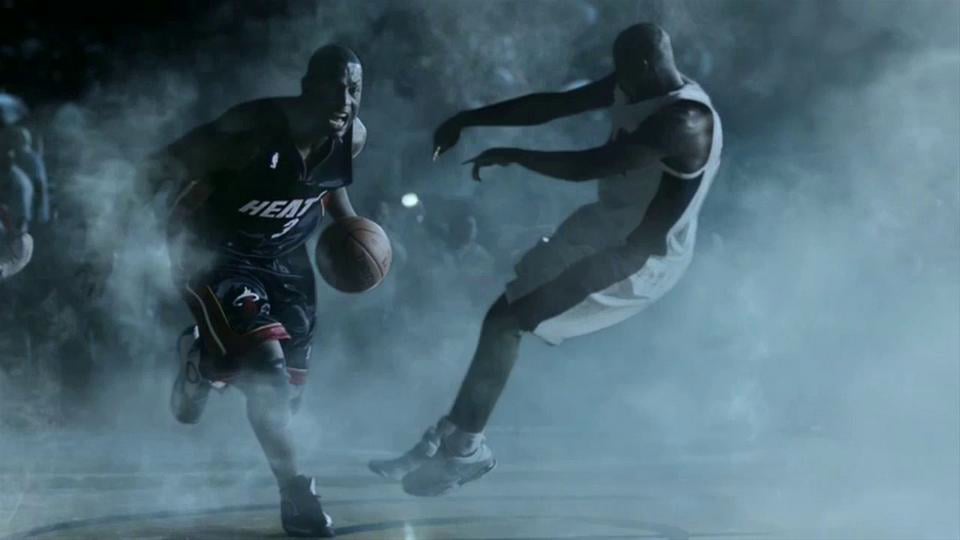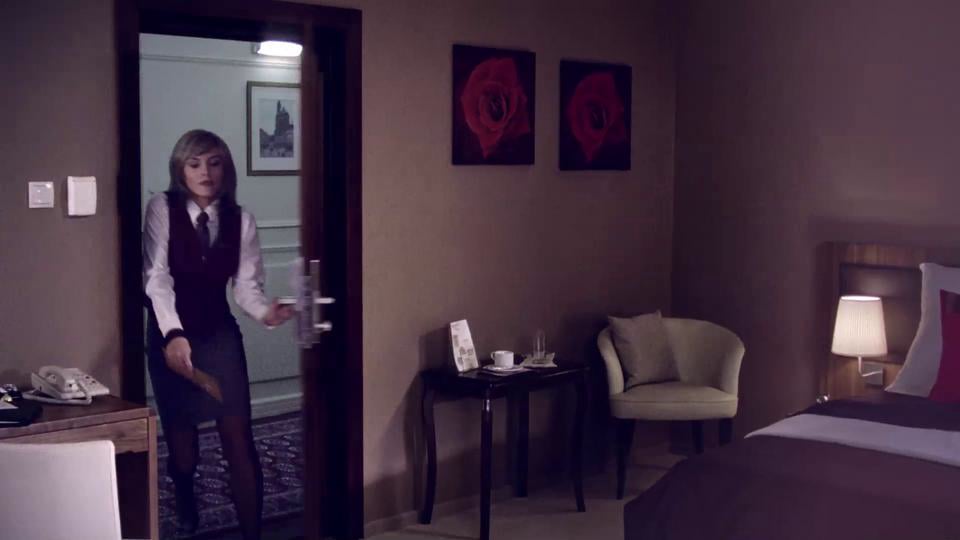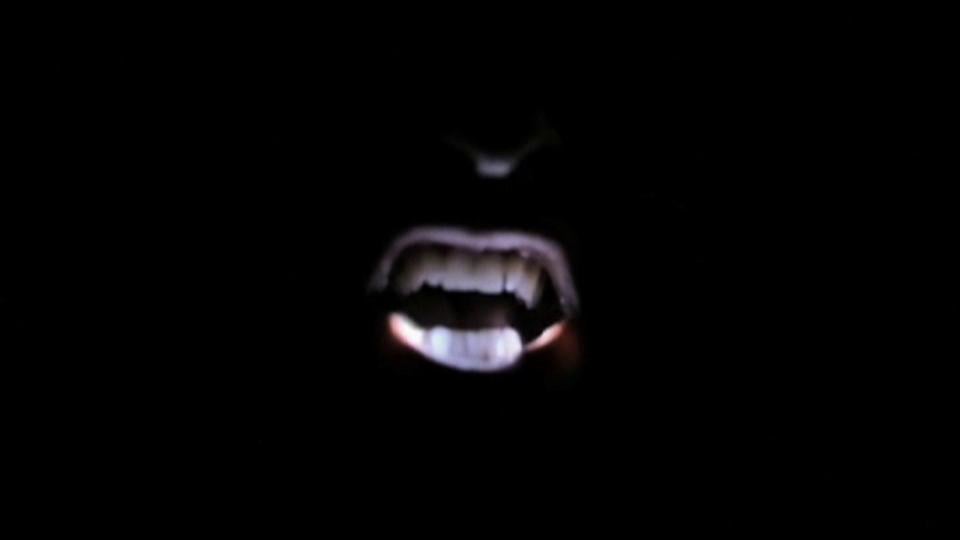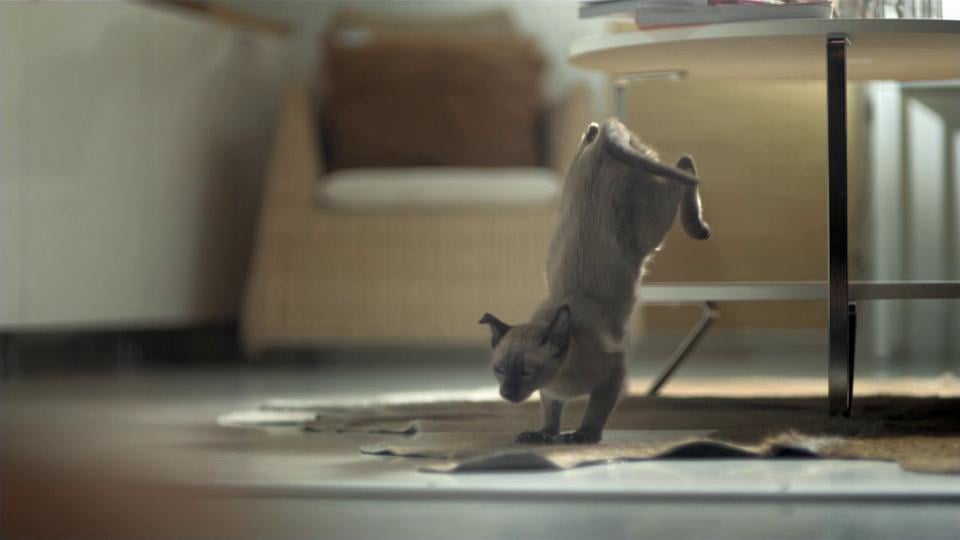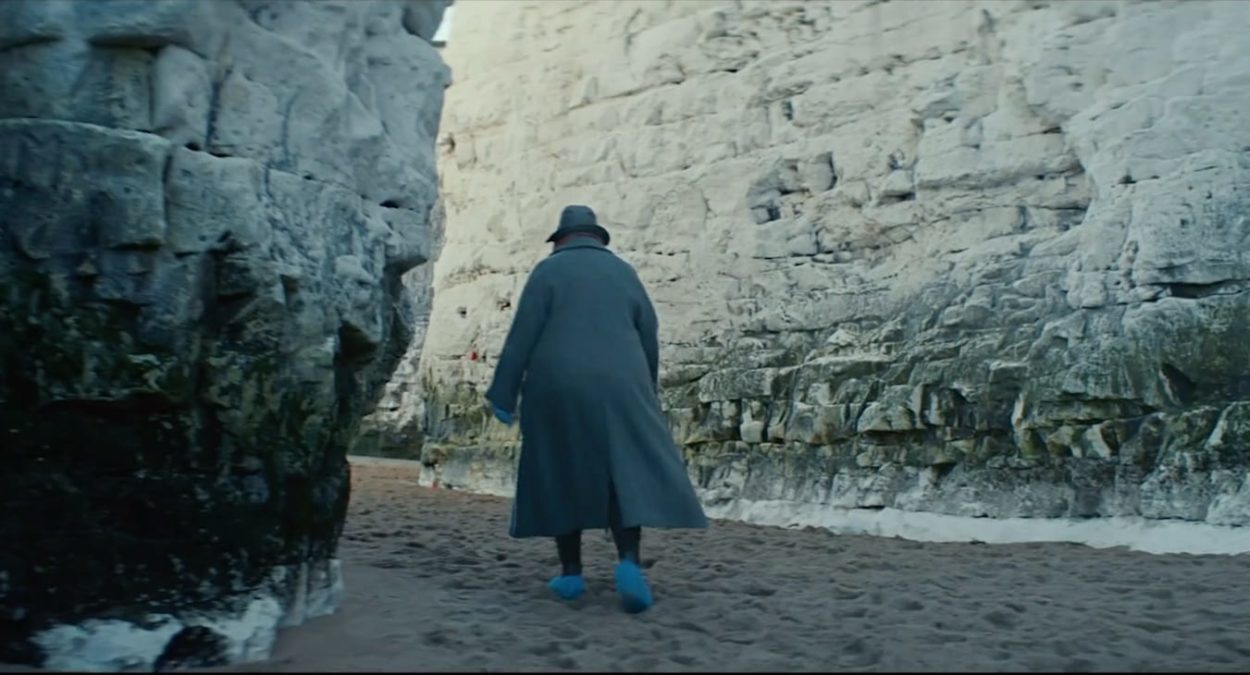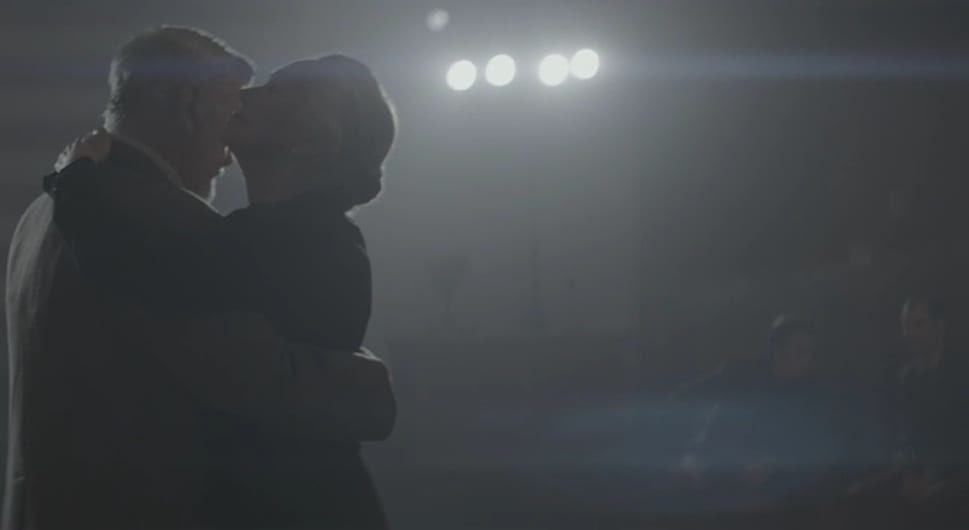In a new series, 1.4 talks with brilliant cinematographers and editors who bring their own particular magic to the art of making great films. Editors, those mavericks who are responsible for orchestrating miles of footage into order and art, are often overlooked in the leagues of praise – after all most directors and producers know the backs of editors’ heads more than their faces – so we want to turn the light on in some of those dark editing suites.
First in our line up is Bethnal Green-based Trim editor and founder Paul Hardcastle who discusses buying old beautiful sofas, sleeping on them and being born on one in Soho. See some of his stunning work in Related Content and scroll to bottom of page to read the reasons why Paul rates them.
Tell us about your childhood.
I was born on a sofa in Soho, London. This was a surprise not only to my parents but also to our neighbor Mrs Agosti, who came around the next day and presented them with a whole salmon because she had not been able to help the night before. I’m not sure if this is a coincidence, but I love salmon.
One of my earliest memories is that there was an abandoned room underneath our kitchen/dining room. My dad cut a hole in the floor and built a trap door and opened up the old staircase which led down to the secret room. This became my brother’s and my bedroom.
If my parents were having a dinner party, we would have to knock on the ceiling to get out as they needed to put the table over the trap door to create enough room… not sure this would meet European health and safety these days.
What did your parents do?
My mum always worked for various charities and my dad in film. He used to run the NFT and created MOMI (Museum of the Moving Image… RIP) so I basically grew up in a cinema watching inappropriate films. I still have nightmares of spiders coming out of hands from Un Chien Andalou which I saw at about the age of seven at the NFT.
What did you do after leaving school?
After realizing I didn’t like mopping floors much, I got a job at the London Film Festival as a volunteer and luckily met a few cool people and had a couple of years working around Europe at various film festivals. This was a very fun time, you ended up seeing the same people and filmmakers across the circuit.
When and how did you first realise you wanted to edit film?
Hmm probably when I couldn’t get any other job. I knew I wanted to work in someway in the industry. I always felt much more comfortable talking about movies than anything else really, but thought I’d be a producer. I met someone who had a small editing company in the pub and got a trial as a runner there, then the assistant left and I got a chance to edit a bit and really liked it.
Can you describe any moments in music videos or commercials that you have found electrifying in terms of editing technique?
I think to start with it was the big three – Cunningham, Gondry and Glazer that got me very excited about both music videos and commercials.
Cunningham was incredibly precise with the edits, orchestrating the images to fit together so perfectly musically. I love his art direction too where things can truly be disturbing and macabre and scary while being incredibly beautiful and moving.
Gondry because his stuff was fun and inventive and made your head hurt trying to work out how he did it… It was always exciting to wait for his next video.
And Glazer who was always an amazing storyteller. Not only were his Radiohead and Uncle videos incredibly atmospheric and beautifully shot, but his commercials were always amazing and surreal… the Guinness Surfers and Dreamer and the cool Air Jordan commercial.
I was also working as Tony Kearns’ (the Colonel) and Art Jones’ assistant at Swordfish and they were editing amazing videos and commercials at the time there too… from Jamie Thraves, Pedro Romhanyi, Walter Stern, Shynola, Mike Mills, Johan Renck, David Slade, Tim Hope, and starting out Paul Gore and Sam Brown (who taught me how to make the perfect cup of tea) so everyday was very inspiring… I still think Tony Kearns is probably the best music video editor ever.
What is your process for viewing and organising rushes? Do you view everything? What is behind your decision to discard or keep? If you’re on a shoot do you earmark footage that you think is the best take?
Ha, well the older I get the more OCD I get on this. I have to watch everything otherwise I feel really uncomfortable like I’ve missed something. I select as I go along and then keep going through the selects a few times refining and discarding shots as I go along. This all becomes quite ritualistic and I always listen to music, completely random tracks, trying to feel the tone of the film. After the logic then comes the creative bit which is the making where you assemble then refine… But there’s always a moment when it’s not working and then something happens and it is. And for me that’s my favorite thing in the whole edit process when it starts working. This still feels the same as the first piece I worked on.
Do you always go on shoots?
Going on the shoot is becoming more regular these days… It used to be if it was a particularly technical job where it’s important to check it’ll work. But the nature of the industry these days is that clients sign off the job so late that there’s also a time necessity to it, just getting it finished in time.
How much would you fight for a decision or your own vision?
I think you kinda fall in love with everything you do because you have to make it. So you obviously want to protect it. Saying that, it’s important to collaborate and take in other opinions. For instance I’d usually do a change someone requested if it’s not too ridiculous even if I disagree with it… as I’d change it back later and might find something I’ve missed that stays in the piece. Put it this way, in the end I usually get my way, but might have to go around the houses to get there.
Where’s your favorite editing room you’ve ever been in? Describe your own editing suite.
So if I ever write an autobiography I’m going to call it “Rooms without a view : edit suites across the world”… Usually quite unremarkable. And on set you’re usually in a black-out tent or a mini bus or a shed either shivering or sweating.
I do kinda love the edit suites at Trim. We’ve made it a home as we’re there more often than our own. There’s a huge collection of eccentric furniture brought off e-bay, about 75 percent of the office in fact. People think Trim’s been getting bigger because more editors are represented, but in fact it’s to fit all my OCD buys in. I’ve now been banned from buying any more furniture for the office with a strict one in two out. I haven’t got a problem honest.
What are the essential things you need in an editing suite?
A computer for me and a couch for the director and agency, to sleep on.
You work in the States as well as in London. Do the editing processes vary wildly between the countries? In the states do you work alongside agency creatives more? Who has final cut?
You’re booked by the agency, usually with a nod from a director who’s bidding, and it can be for all the directors bidding sometimes… so there are weird moments when the director who puts you up for the job doesn’t win it but you still end up editing the job. Very different to Europe.
It’s also harder to get a good job through undamaged in the States. I think there’s a lot more diplomacy and explanation needed to explain decisions there and boy do they like to conference call. It’s like a national sport. And there are usually layers and layers of approvals to go through. This is when it feels like I actually have a proper job for a living.
Do you always do a director’s cut or for that matter an editor’s cut?
I try for the director’s cut to be the agency cut and when a job goes well this is normally the case. This seems a little harder these days with a lot of clients being super cautious and conservative thus some times not making the right creative decision.
What’s your favourite genre to edit – comedy, live action dramatic spots, heavy dialogue, animation etc?
I truly like it all.. I think you need to focus on all genres otherwise you’re just a one trick pony, no? I just like working on stuff that gets an emotional response… and that can be any of those.
Do you often see scenes that you think should be removed, that the director may see as essential but you see it as not necessary at all?
This is basically why editing never can get boring. So if you break a common scene down: Here’s a wide exterior of my house…cut to a mid of me at my dining table in my boxers and Tshirt in front of a computer… cut to a cue of my face smiling as I’ve amused myself with my wit…
This is a set up at its most basic, but equally this scene could work with just the exterior wide or just an extreme cue of my face, or a mid with a voice over… there’s no real right answers it’s just what’s right for the film you are working on at that time. And that’s why collaborating with a director is important as it makes each job different as it’s a merging of opinion together.
Can a film change drastically during editing? Do you have any examples?
Yes I’ve worked on a few which have been destroyed by committee… Be it client or agency. These are the worst as it’s like a bad breakup. Sorry I’m going to let you guess which ones these are.
On a bigger scope I’d love to see the original cut of Sexy Beast before Sam Sneade recut it… I heard it was drastically different and would love to compare.
Who or what presents the greatest problems in producing a film – particularly concerning the editing process? What ruins a job and conversely what makes a job really sing?
Ruined: Bad taste, over explanation, too many shots ie over edited, too much product (be it band or object), not enough time.
Sing: Good taste, feel and tone, pace, and grit. A nice lunch helps too.
Do you think some productions have a magical element to them and everything goes smoothly while others can be jinxed from the start? Are you superstitious?
Sometimes on set you know it’s going to be special, I knew when the first two shots on Philips carousel worked it was going to be special, and also on Smith and Foulkes Intel job.
But on Ikea Cats for instance you had no idea as there were so many cameras and every take was just moments of anything usable. Blink and you’ve missed it.
I think one thing that stands out is that on every job which I feel is good there’s always a great team of people on it from crew to agency; the ones I haven’t liked so much usually involve a few of those being cocks.
And whether it’s an easy or painful process – are you generally happy with the end result?
Usually it’s just finished, it’s imperfect but I’ll have worked as hard as I can on it and I can get some sleep. Generally it would have been fun and I will have met some interesting people on the job.
What are your greatest strengths and weaknesses? How long are the longest stretches you’ve worked and on what projects were they?
I’m a huge procrastinator, which means I’ve got furniture for the office and nice shoes for me. I’m very good at sitting. I think the longest I’ve worked on a commercial piece is Nike ‘My time is now’ I think I ended up with 94 hours of footage. I think I was editing this for 2.5 months but went a little cabin fever crazy so need to check.
I think on a short film with Bjoern from the Vikings we spent two years before he felt it was finished but that was three months off then few days trying things then another three months off etc.
Is editing now more of a 10 to 6 work day?
Yep that sounds about right : 10 am till 6 am.
What do you edit on and do you prefer film or digital?
I am mainly Avid based and know what nearly all the buttons do. I do a few jobs on Final Cut but only a few a year.
I still love film for a few reasons – firstly the way it feels instantly when you look at it. Secondly the imperfections that gives it a realness that you loose with the cleanness of digital (although this has improved a lot) and secondly it controls the shooting a bit, so you rarely have over tens of hours of footage.
Music videos or commercials, what’s your big love?
Film on this one, I think that’s the Big Love, music / commercials are my hobbies.
Is creativity getting more conservative?
Clients are getting more conservative, creativity is as free as it’s allowed. (That sounds a bit like wank, but it’s true.)
What are your interests outside of work?
Shoes, family, food, yoyo dieting, food and carpentry.
You probably can only see the flaws but which pieces that you’ve edited are you most proud of and why?
It’s impossible for any piece to be perfect, but you do fall in love with most jobs you work on in some way. Sometimes it’s not the actual edit but more the experience or group of people involved.
So looking at it that way I’d choose.
Philips Carousel by Adam Berg.
A career changer for Adam and myself. I liked being on the shoot and the sheer excitement of seeing it come together, You just knew it was going to be great when the first two shots edited together.
Hornbach (8 mins) or Nomis(3 mins) by Woof Wan Bau (Joji Koyama).
Such a lovely man who has a wonderful sense of narrative and a unique art direction taste. I love working with Joji because it always feels original and refreshing.
Air Jordan Nightmare by Adam Berg.
This is interesting. It’s got a nicely dark feel to it… but in an editing sense feels like an achievement because of what I wasn’t allowed to use. The going through players were filmed a lot bigger with them being flown all over the place, but NBA rejected [the footage] as it was considered to be a foul. Then we weren’t allowed to show opposing players as they weren’t NBA players and then couldn’t show where it actually was shot as again it wasn’t an official stadium. So with those restrictions in mind I think it’s pretty good.
Intel by Smith and Foulkes.
This was just great fun from start to finish. Shot in Prague, we were staying in the same hotel as Rooney and Colleen after his older lady experience. Every time our minibus left the car park we got papped by the paparazzi.
Dave Gahan by Jaron Albertin.
Back when I used to do music videos a lot. Think it appeals to my OCD side, I remember cutting every single light to the music, think that’s 18 or 19 in some shots but the result becomes quite hypnotic and rewarding.
Ikea by Adam Berg.
This feels very personal maybe because of the music by Mara Carlyle who’s a good friend. It also reminds me to keep it simple, there’s really only three story beats in it – arrive, wander and settle. There was a lot more story to start with, there were jumping out cars, exteriors, roofs etc.
Cravendale by the Vikings.
I just like the mix of drama and comedy on this one. A lovely agency, lovely production company, lovely directors equals lovely job.
Nike Game On by Adam Berg.
This because of what you can achieve in a short period of time with the right crew (MPC were incredible), I think it was three weeks from first shoot day until the delivery. I was having to take a shot of vodka at 2am some nights as a stimulus, while having a room full of sleeping agency.

